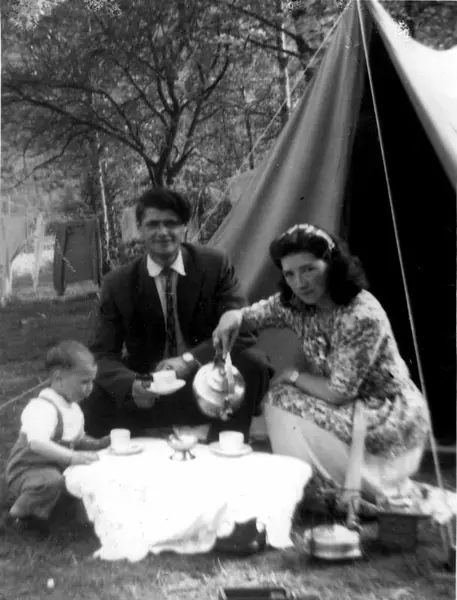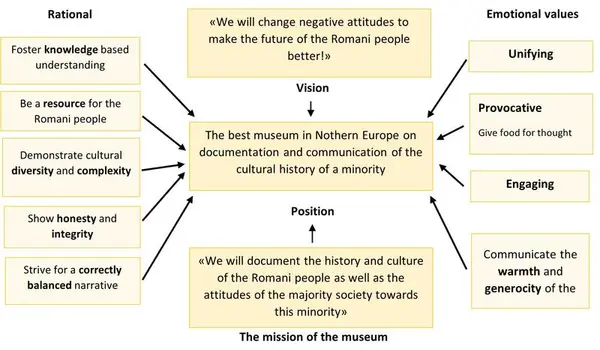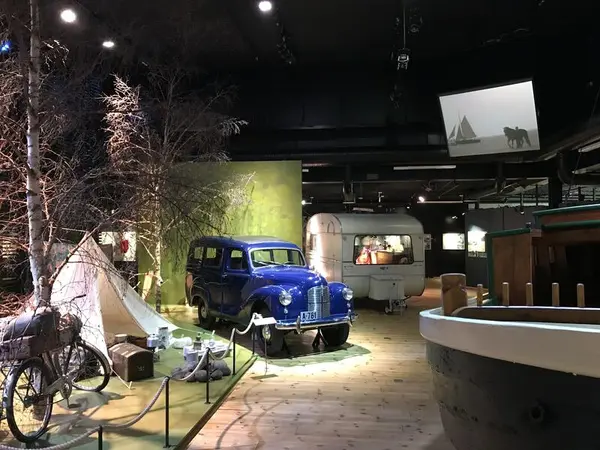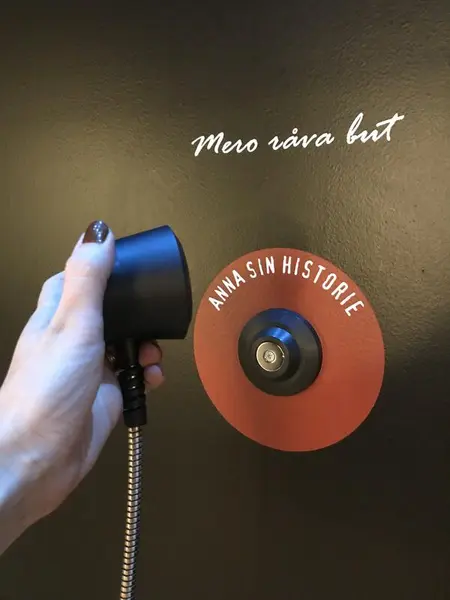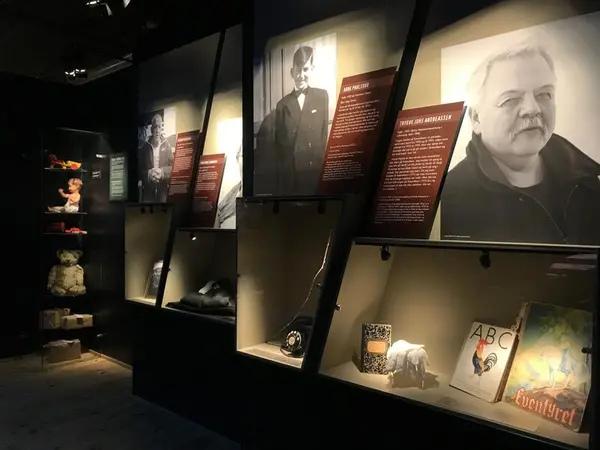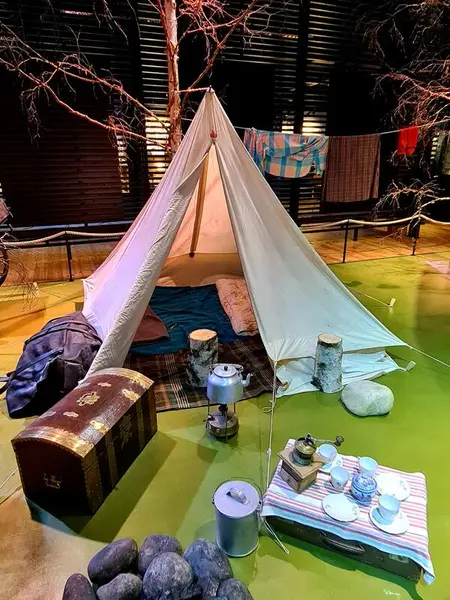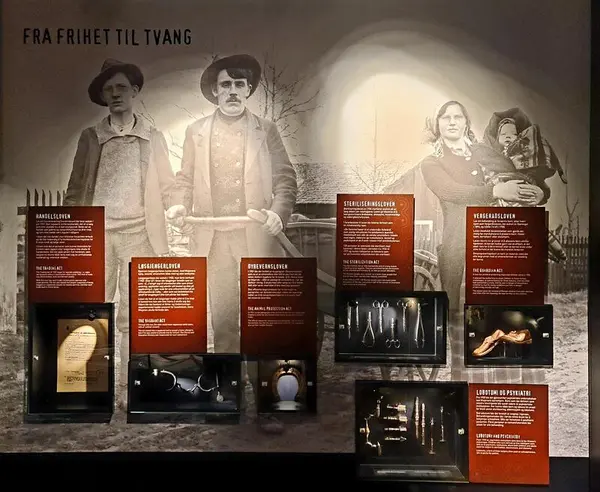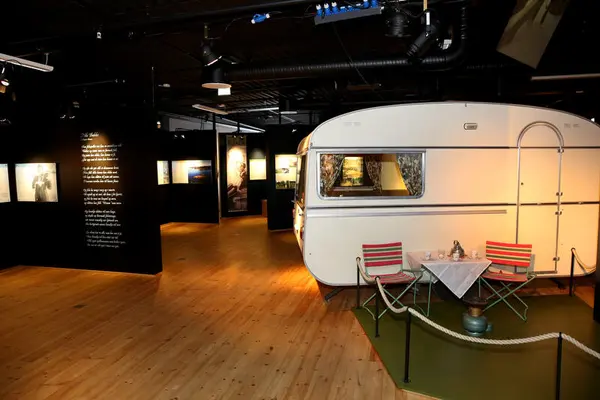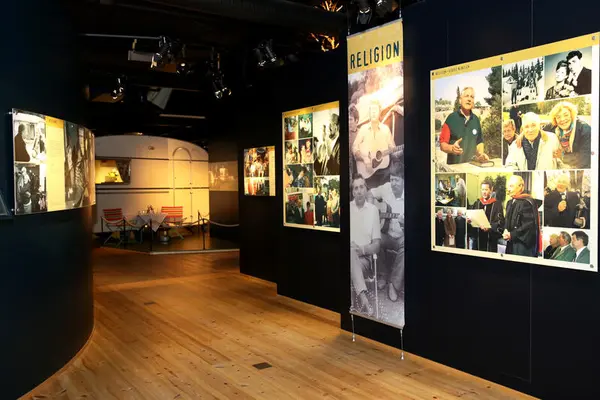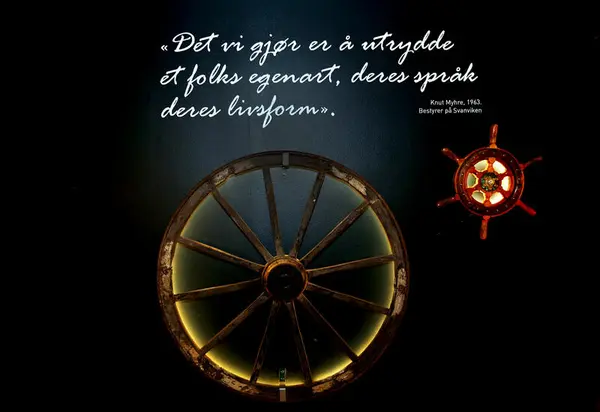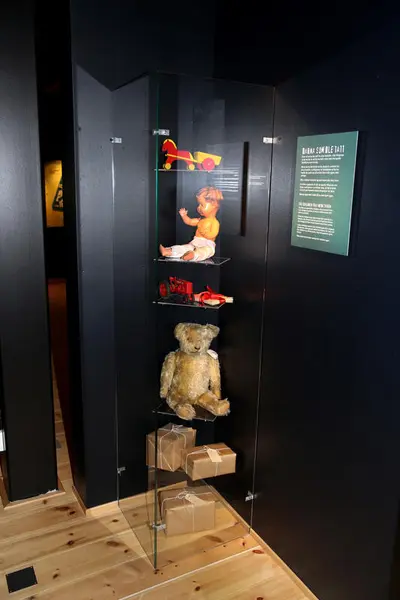Welcome to the online exhibition Latjo Drom
The exhibition Latjo Drom is the result of an ongoing collaboration between the Tater/Romani people and the Glomdal Museum, where the personal stories of this national minority are centre stage of the exhibition. Using the academic knowledge of the curator and the lived experiences of the Romani people, we aim to give a genuine, warm, and vivid presentation of this national minority, in both the past and the present.
Through this exhibition we also wish to create a better understanding and insight into the Tater/Romani people and their culture and history, to counter prejudices and to create cultural pride among the members of this minority. Our vision is to promote knowledge and understanding of the cultural diversity of the minority and to uphold their rights to maintain their own culture.
From their perspectives as time witnesses or witnesses of history, the Romani people tell enthralling stories from an era that is unknown to many people. While some of these stories exemplify the Norwegian policy of assimilation towards national minorities - a policy that ruined the lives of individuals and their families - other stories are about the happiness of a travelling way of life, with freedom, unity, and joy.
-
Oliver Alexander and Karoline Oliversen with their son in Ørstad at Sunnmøre. Karoline is serving coffee, ca 1950. Foto: Anno Glomdalsmuseet
We wish to tell stories about the past, present and future. What do the people of this minority want to emphasise and what do they want to preserve from their culture? Music, family unity and freedom are things younger people often mention as values they want to retain for the future.
This is the online version of the exhibition Latjo Drom, which was opened by the Norwegian Crown Prince Haakon Magnus at the Glomdal Museum in Elverum in 2006, an exhibition that has been updated various times since this date.
- 1/1
The Crown Prince and key people during the opening of the exhibition Latjo Drom at the Glomdal Museum in 2006. Foto: Anno Glomdalsmuseet
What does Latjo Drom mean?
The name Latjo Drom occurs in Romani, the language of the Tater/Romani people. Directly translated it means “good road”, but it can also be translated as “nice journey”. Since our permanent exhibition at the museum opened in 2006, new information and knowledge has been incorporated. This online exhibition therefore contains new stories. We are particularly happy to present short films that have been produced in different workshops, and which are also a result of collaboration between the minority and the museum.
You will see photos from various educational events and activity days that have also been a part of the Latjo Drom activity programmes. The Christmas concert, the market in Elverum, and the time-travel Latjo Drom are among these.
What should this national minority be called?
Today, the official name for this national minority is Tater/Romani people. Since no agreement has been reached as to whether one should use Tater (Taterne in Norwegian) or Romani people (romanifolket in Norwegian), both names are used – with a slash between them – to show that they are equivalent terms. Note: it is not the Romani people and the Tater: these are two names that mean the same thing.
Travellers (reisende/reisendes in Norwegian) is a name that older generations in particular prefer to use. However, “Traveller” is not a name the majority population associates with a minority, and it can easily be interpreted as anyone who is travelling, regardless of ethnicity.
There are also names in Romani, the Tater/Romani people’s own language: these are vandri, vandriar og tavring (the two first names mean Travellers, while the meaning of Tavring is more dubious). These names are endonyms, which means names that people call themselves.
Romani people who live along the coast and travel by boat call themself Boat Travellers (No: Båtreisende), which is an endonym for those from the group who used to travel - and continue to travel – along the coast by boat.
We prefer to use names that are understandable and unambiguous for the group’s members and others. Therefore, we will primarily use the names Tater/Romani people (either or both of them), but we will also use Travellers. They will all mean the same.
The Tater/Romani people: a national minority
The Tater/Romani people or the Travellers, as many choose to call their own people, are today defined as one of Norway’s five national minorities, along with Kvens, Forest Finns, Jews, and Roma/Gypsies. National minorities are defined as ethnic, religious or linguistic minorities with long-standing ties to the country. The group must be able to show ties to the country for at least 100 years.
Since arriving in Norway more than 500 years ago, the Tater/Romani people have been subjected to abuse by the authorities and to prejudice and discrimination by locals. Few countries’ assimilation policies towards the Tater/Romani people were as harsh and systematic as Norway’s.
Public apology and the establishment of Latjo drom
In 1998 and 2000, two governments and the Church of Norway (through the Church Meeting) publicly apologised for the abuse and neglect suffered by the Tater/Romani people. Collective measures have also been initiated to compensate for the injustices inflicted upon them.
In 1998, the Norwegian government, led by Kjell Magne Bondevik, issued an apology to the Tater/Romani people. The same apology was repeated by Jens Stoltenberg's government in White Paper 15.
White Paper 15 was a follow-up to Norway’s 1998 ratification of the Council of Europe's Framework Convention for the Protection of National Minorities. The White Paper stated that a Centre for Documentation and Education would be established at the Glomdal Museum. This is what we today call Latjo Drom.
The organisations of the Tater/Romani people and their collaboration with the Glomdal Museum
The European Council's Framework Convention emphasises that the Tater/Romani people should be able to take an active part in all aspects of community life, particularly in the decision-making processes which are of direct relevance to them. In accordance with this principle, Taternes Landsforening (TL) and Landsforeningen for Romanifolket (LOR) have contributed to the Latjo Drom exhibition and to other projects and events connected to the initiative, through the working group Latjo Drom. These organisations were selected because they meet the minimum requirements for organisations that wish to receive public financial support.
Taternes Landsforening was, together with the municipality of Våler, the first to take the initiative to invite the museum to establish a cultural representation of the Tater/Romani people at the museum. TL was therefore part of the working group from the very beginning (in 1997). LOR has been a part of the working group since 2004. The primary function of the working group has been to plan, discuss and determine the structure and contents of exhibitions and events within the technical and professional framework of the museum.
The foundational principles behind Latjo Drom
The government’s Report 15 to the Storting (2000-2001) laid out clear-cut guidelines for the museum’s work on the exhibition Latjo Drom. It states that the goal of the exhibition is to strengthen the culture of the Tater/Romani people, and it emphasises that cultural content should be the main area of focus, whereas a smaller portion of it should be devoted to the discriminatory policies which promoted injustices. The report also emphasises the need to teach what a minority is, to counter abuse and injustice, and to work towards tolerance and diversity. In order to create tolerance and diversity, the work to counter prejudices is central for the museum.
These guidelines notwithstanding, the Glomdal Museum and the working group wanted to formulate a shared attitude concerning the goal of and vision for the exhibition.
We also wanted a mechanism whereby we could measure our work and create a stronger sense of ownership towards the exhibition and a better understanding of what should be its main features. Following a seminar, the members of the working group agreed on the following promises, values, and vision for the exhibition.
The foundational principles were summed up in the following diagram:
- 1/1
Tater/Romani identity in the public sphere
Due to the discrimination the Tater/Romani people have been exposed to, some members of this ethnic group are still concerned to keep this identity in the private sphere. It is an unwritten rule among the Tater/Romani people that one does not mention that somebody is Tater/Romani in public before a person has mentioned it themselves. Even though a person of Tater/Romani ethnicity may have revealed an ethnic identity in public, this does not mean that the person wants to have this identity mentioned in any given situation.
This is important to know, first and foremost for teachers and others that are engaged in the dissemination of the culture and history of the Tater/Romani people, but also for Buroer (people that are outside of this group) who have friends and acquaintances from among the Tater/Romani people.
The Glomdal Museum welcomes you to a journey in the exhibition Latjo Drom and hope it gives you a good experience, and more knowledge and understanding about the Tater/Romani people and their contribution to our cultural diversity.
Pictures from the exhibition at the Glomdal Museum:
- 1/13
- 2/13
- 3/13
- 4/13
- 5/13
- 6/13
- 7/13
- 8/13
- 9/13
- 10/13
- 11/13
- 12/13
- 13/13

